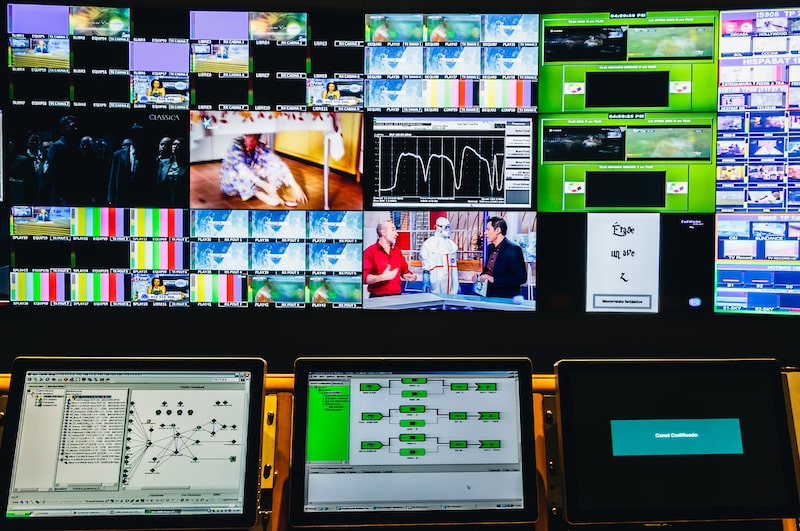BROADCASTING
TV Production Centres
Turnkey digital transformation for television broadcasts.
TSA provides the most suitable complete solution for each client, from ingest to broadcast, including studio production and live broadcasts:
- Consultancy and design of television production centres.
- Development of the project and implementation of technology in television broadcasts.
- Analysis of the workflows and recommendations on the changes needed for digital transformation.
TSA offers its clients more than two decades of experience and a constant updating of its services and solutions thanks to having a close relationship with key manufacturers in the sector.
Integration of production centres

Centralised and distributed ingest
The ingest port, which is the gateway to the content, allows all the material to be used to be available for the shared job at the production site. The most common types of both live and recorded, content include: news, exchanges, press agency feeds, movies, series, etc.
The raw material that is ingested is used to create pieces of audiovisual content.
The final edited and finished materials are used for the broadcast and archived.
The central ingest is usually given in a room of the production centre, from where contents are injected into the central system on a large scale.
That known as distributed ingest is the remote input that is carried out by the roles of journalists or editors, as well as from delegations, web or remote sites through data connection.

Signal Control Centre
The central control is the area where the baseband input and output signals in the production centre are received and distributed. In some cases the central control area merges with the central ingest area as they share part of the core of the daily work.
In the case of large production centres, these are separate but interconnected areas that perform the quality control tasks of the audio and video input and output signals from a PPC.

Studios and production control
The performance of a programme or content is created in the studios or sets; this can be broadcast live or recorded to be subsequently edited and these studios can be real or virtual.
The mixing of signals in real time is produced in the production control room, which comprises mixing the audio part, the camera control, graphics, video signals, lighting control and the mixing of signals from both the cameras and external signals. All this is produced and mixed to result in the audiovisual content.

Shared non-linear production systems, PAM -Production Asset Management-
PAM is a file management system of the media (asset) used for audiovisual production.
Currently, PAM systems are digital non-linear systems that are formed by a database and shared storage which all the clients involved in editing and producing of the television broadcast participate in.
A PAM systemis basically composed of the ingest, non-linear edition, text system and the studio broadcast. All this in a shared and interconnected storage system with the rest of the departments involved in a television broadcast such as the archives (Media Asset Management, or MAM), master control room (Playout) and the exchange of signals with third parties.

On-site or in the cloud Playout and broadcast solutions
Any produced, edited and finished or live signal, passes through a final control room prior to being broadcast which is the Playout or the transmission control room. This is where the signal, content and quality are checked prior to being broadcast. Normally, the advertising blocks, promotions and canned contents previously prepared in the Advertising Production Centre are broadcast from here. This area uses automation systems with video servers to achieve the best possible quality and efficiency. Any continuity system must be perfectly integrated with the PAM and the MAM.
Depending on their location there are various broadcasting and continuity playout, which can be on site or in the cloud.

DTT, satellite and OTT broadcasting systems
The last step in the workflow at a production site is the broadcast itself. This step enables the produced signal to reach the viewer. Depending on the channel, there are several modes of transmission: DTT in the case of traditional open signal linear channels; cable and satellite transmission for international subscribers or signals; and OTT platforms for global consumption.
What is a TV Production Centre?
A television production centre is the place where the television signal we see in our homes is produced. Where content is received, created and distributed.
Did you know…
Each day, more than 5,000 people work with the solutions that TSA has implemented in television broadcasting.
